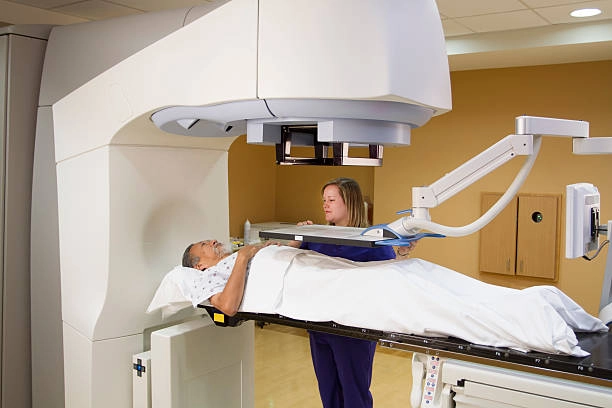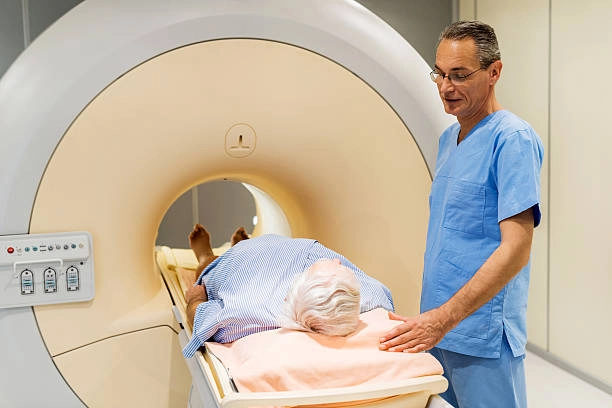Cancer Treatment
Cancer Treatment
Understanding Lung Cancer: Risk Factors, Symptoms, and Early Detection
Lung cancer is one of the leading causes of cancer-related deaths worldwide, affecting millions each year. This comprehensive guide explores lung cancer, highlighting its key risk factors, common symptoms, and the critical importance of early detection. Smoking remains the primary risk factor, while environmental exposures, chronic lung diseases, and genetic predisposition also contribute significantly. Early-stage lung cancer often presents no symptoms, making screening methods such as low-dose CT scans, chest X-rays, and emerging biomarker tests vital for timely diagnosis. Lifestyle choices, including a balanced diet, regular physical activity, and avoiding harmful exposures, play an essential role in prevention. Awareness of family history and genetic risk can help individuals take proactive measures. Public education campaigns emphasize recognizing warning signs, understanding personal risk, and participating in regular screenings. Advances in research, such as personalized medicin
Cancer Treatment
Recognizing Early Symptoms of Lung Cancer for Better Health
Lung cancer is one of the most serious health challenges worldwide, and early detection greatly improves treatment outcomes and survival rates. This article provides a comprehensive guide to recognizing the early symptoms of lung cancer, including persistent cough, changes in breathing, chest pain, unexplained weight loss, fatigue, recurring infections, and coughing up blood (hemoptysis). It emphasizes the importance of vigilance, especially for high-risk individuals such as smokers, former smokers, those with a family history of lung cancer, or people exposed to environmental toxins. By maintaining symptom diaries, monitoring changes in health, and seeking timely medical consultation, individuals can detect potential problems at an early stage. Regular checkups, preventive lifestyle measures, and awareness of personal risk factors are crucial for lung health. Understanding these early warning signs empowers readers to take proactive action, participate in screening programs, and adopt
Cancer Treatment
Comprehensive Nutrition and Lifestyle Guide for Lung Cancer Patients
This comprehensive guide provides lung cancer patients and their caregivers with practical strategies for nutrition and lifestyle management throughout treatment and recovery. It emphasizes the importance of nutrient-dense foods, including lean proteins, whole grains, fruits, vegetables, and healthy fats, to support immune function, tissue repair, and energy levels. Hydration and careful supplementation are also highlighted as key components of patient care. Physical activity, tailored to individual capacity, helps maintain muscle strength, lung function, and overall well-being, while fatigue management strategies, such as small frequent meals, rest breaks, and mindful pacing, improve daily energy. The guide also addresses the avoidance of harmful habits, including smoking and excessive alcohol intake, and incorporates mind-body practices like meditation, yoga, and relaxation techniques to support mental health. Practical meal planning tips and small lifestyle adjustments are provided
Cancer Treatment
Prostate Cancer: Understanding Risks, Symptoms, and Early Detection
Prostate cancer is one of the most common cancers affecting men, particularly those over 50. Understanding its risk factors, early symptoms, and the importance of timely screening is essential for effective management and improved survival rates. Key risk factors include age, family history, race, and lifestyle habits such as diet and exercise. Early stages of prostate cancer often present no symptoms, but warning signs may include difficulty urinating, frequent nighttime urination, blood in urine or semen, pelvic or back pain, and erectile dysfunction. Screening methods such as the prostate-specific antigen (PSA) test, digital rectal examination (DRE), imaging, and biopsy play a vital role in early detection. Men with higher risk factors, including African-American men or those with a family history of the disease, should consider beginning screenings earlier. Early detection allows for a wider range of treatment options, including surgery, radiation therapy, hormone therapy, or activ
Cancer Treatment
Living Well with Prostate Cancer: Diet, Exercise, and Lifestyle Strategies
Living with prostate cancer presents physical, emotional, and social challenges, but lifestyle choices can significantly improve quality of life. This comprehensive guide explores diet, exercise, and psychological support strategies for men managing prostate cancer. A nutrient-rich diet emphasizing vegetables, fruits, whole grains, lean proteins, and healthy fats can help reduce inflammation, support immunity, and manage treatment side effects. Regular physical activity—including aerobic exercises, strength training, and flexibility routines—maintains muscle mass, improves cardiovascular health, and alleviates fatigue while boosting mental well-being. Managing fatigue, urinary changes, digestive discomfort, and hormonal shifts is crucial, and mind-body practices such as meditation and mindfulness can support stress reduction. Emotional support, coping strategies, and open communication with family and caregivers enhance resilience and reduce isolation. Maintaining quality of life durin
Cancer Treatment
Prostate Cancer Screening: Essential Guidelines for Men
Prostate Cancer is one of the most common cancers among men, particularly over the age of 50. Early detection through routine screening can significantly improve treatment outcomes and survival rates. This comprehensive guide explains the main screening methods, including the Prostate-Specific Antigen (PSA) test and the Digital Rectal Exam (DRE), detailing how they work, their benefits, and limitations. It also highlights key risk factors, such as age, family history, race, and lifestyle, which influence individual screening recommendations. The article discusses age-based guidelines for both average-risk and high-risk men, emphasizing the importance of personalized screening schedules in consultation with healthcare providers. Early detection has both advantages, such as timely treatment and improved quality of life, and potential drawbacks, including overdiagnosis and false positives. In addition, the guide covers lifestyle strategies to support prostate health and reduce risk, as we
🔥🔥Popular Posts






